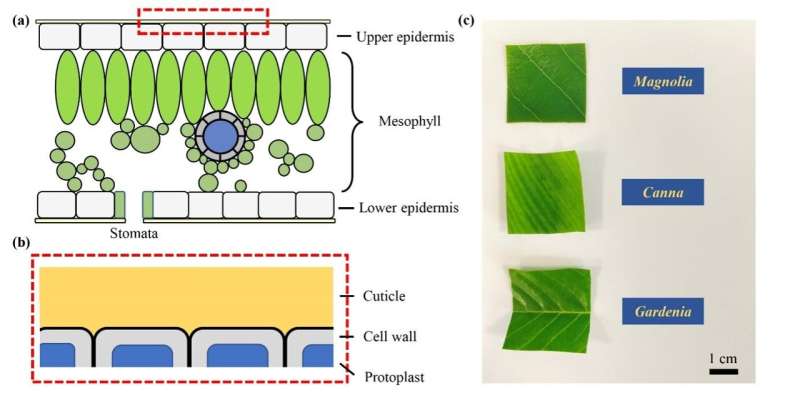Thermal infrared reflectance characteristics of natural leaves in the 8–14 μm region

A research team led by Prof. Ye Hong from the School of Engineering Science at the University of Science and Technology of China (USTC) of the Chinese Academy of Sciences (CAS) has developed a radiative transfer model for plant leaves in the thermal infrared (TIR) spectrum, and unveiled the underlying mechanism governing the correlation between plant leaves’ thermal infrared reflectance characteristics and their water content based on this model.
The study was published online in Remote Sensing of Environment (RSE).
The Earth’s atmosphere exhibits little absorption of thermal infrared (TIR) radiation within the 8-14 μm region. As a result, TIR radiation emitted by plant leaves can penetrate the atmosphere and be detected by sensors, making TIR remote sensing a crucial tool for monitoring the environmental stress conditions of vegetation.
The leaf water content serves as a vital physiological parameter, providing insights into the growth and health of vegetation. Previous experimental studies have revealed a close connection between the spectral characteristics of plant leaves within the TIR wavelength range and water stress conditions. However, the precise mechanism that governs the relationship between TIR reflectance, leaf structure, and water content remains a mystery that requires further investigation.
Prof. Ye’s team developed a thermal infrared radiation transmission model, known as the Leaf-TIR model, based on the epidermal structure of plant leaves, and delved into the mechanism behind the formation of leaf spectral characteristics in the thermal infrared range.
The researchers found that as the thickness of the cuticle layer decreases, the similarity between the leaf and cuticle reflectance diminishes. This is attributed to the weak absorption properties of the thin cuticle layer within the 8-14 μm region, resulting in a minimal impact on the leaf’s reflectance characteristics.
Moreover, they found that when the cuticle layer becomes thin enough, the leaf’s thermal infrared reflectance increases with decreasing water content. This phenomenon is caused by the increasing difference in refractive indices between the cuticle layer and cell walls with lower water content.
The utilization of the Leaf-TIR model allows for the analysis of the relationship between thermal infrared spectral characteristics and the structure and water content of plant leaves. This study unveils the fundamental principles behind the thermal infrared remote sensing monitoring of vegetation water stress conditions. It provides essential theoretical foundations for understanding the TIR spectral behavior of leaves and contributes to the advancement of TIR remote sensing technology.
The paper has received recognition from Prof. Christiaan van der Tol, Associate Editor of RSE, and other reviewers: “The authors nicely explain, I think, why there may have previously been mixed reports in the literature regarding relationships between thermal band reflectance and leaf water content … The uniqueness of many spectral signatures may also open up new avenues for applications including species mapping.”
More information:
Kai Xu et al, Thermal infrared reflectance characteristics of natural leaves in 8–14 μm region: Mechanistic modeling and relationships with leaf water content, Remote Sensing of Environment (2023). DOI: 10.1016/j.rse.2023.113631
Provided by
University of Science and Technology of China
Citation:
Thermal infrared reflectance characteristics of natural leaves in the 8–14 μm region (2023, June 14)
retrieved 14 June 2023
from https://phys.org/news/2023-06-thermal-infrared-characteristics-natural-region.html
This document is subject to copyright. Apart from any fair dealing for the purpose of private study or research, no
part may be reproduced without the written permission. The content is provided for information purposes only.
For all the latest Science News Click Here
For the latest news and updates, follow us on Google News.

